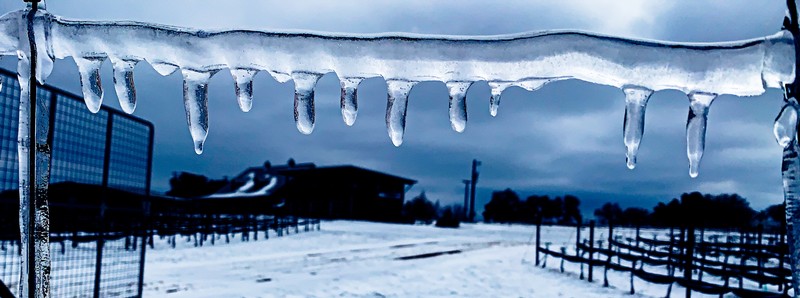What is Non-Vintage?
First things first, let’s look at definitions.
What is “vintage” and what does it mean?
When a year is listed on a wine label – for example, 2017 Marl, “2017” is the vintage year. The vintage year listed on a bottle denotes the wine within that bottle was made from grapes harvested in that specific year. In our example, the vintage year is 2017. In the United States, a wine must be at least 95% from a single year in order to be labeled with a vintage year.
A “non-vintage” wine is made by blending grapes from two or more harvest years. The newest releases of Calcaria and Hensell are non-vintage wines. Our newest release of Calcaria is a refreshing blend of Roussanne, Marsanne, Trebbiano, Viognier and Albarino grapes. Familiar notes of ripe pear and honeysuckle are enhanced by delightful hints of papaya and white peach. Our newest Hensell is a blend of Cinsaut, Grenache, Carignan and Mourvedre. A classic, delicate Provence style rosé, this wine is reminiscent of fresh summer strawberries and cream.
So, does vintage year have anything to do with quality?
Great question! The answer is “yes and no”. Look, we all have good days and challenging days, right? Well, vineyards can have good and bad years. Depending on what happens in the vineyard in any given year, we could have a range of possible outcomes impacting quantity and quality of our fruit. In Texas, the biggest issue isn’t quality - it is Quantity.
A great vintage in Texas is when we actually harvest fruit. Freeze. Hail. Hurricanes. Drought. We have all sorts of weather related calamities waiting to destroy our fruit!

The “good vs. bad vintage” analysis is mostly dependent on weather - something we can’t control. In Texas, we often see wild fluctuations in the quantity of fruit. For example, if a vineyard is hit by hail, we might lose 60% or more of the crop im 5 minutes/ If we have a late spring frost, we can lose 100% of the crop before the vines even gets started. Alternatively, if we have ideal growing weather with ample rain, we might see excess fruit. Historically, we have not had “excess” fruit, but rather we have seen weather events reduce our crop yield. For example, in 2013, our first full commercial year, we lost 90% of our fruit to late spring frosts. More recently, we lost 50% of our fruit to a combination of frost and hail in 2020!
It can be very challenging to deal with high fluctuations in our fruit quantity. One way to smooth out quantity variations is to share of the “excess” fruit from one year with a “shortage” crop from another. We did this in 2020 in response to severe winter issues reducing our Texas High Plains crop. We simply held onto some of our awesome 2019 wines to support our lower volume 2020. This is where “balanced wine” shines through.
The Champagne houses in France (full disclosure: Champagne is my #1 go-to wine, closely followed by Kuhlman Cellars Hensell) utilize blending wines from different years to create non-vintage wines that express the “house style”. Where a single vintage can tell a story of a particular year in the life of a winery, a non-vintage wine can tell a story of life in a particular winery. At Kuhlman Cellars, we aim to provide the best and most balanced wines Texas has to offer every year – even if the wine represents more than one vintage year!